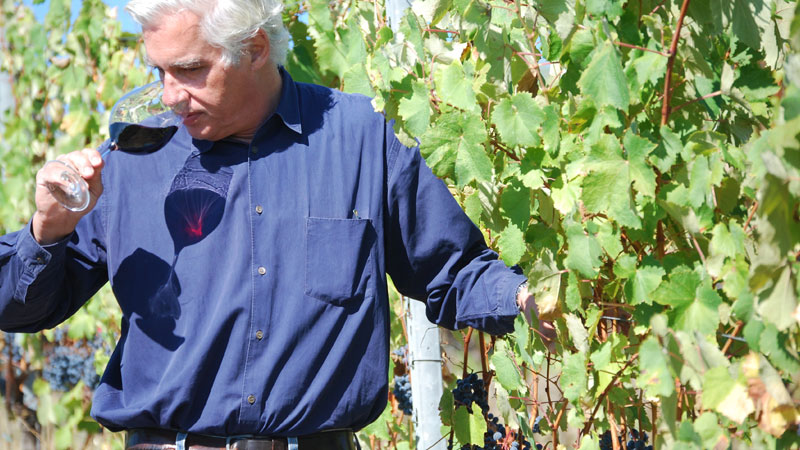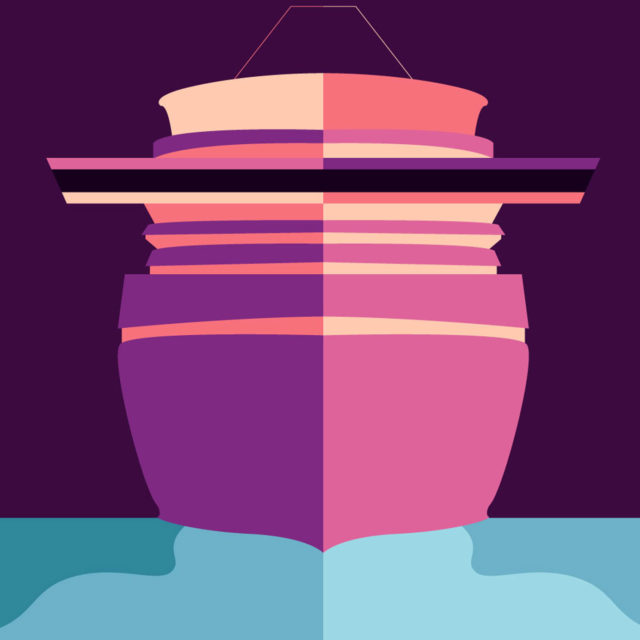Part of a cruise’s allure is the all-inclusive tab, especially at the bar. If you’re lucky enough to be on board a luxury liner, this temptation is heightened from the first glass of chilled Champagne handed to you as you embark, to the perfect wine pairings with your three-course dinner each night.
Sommelier Frank Ebbens is in charge of stocking all the wine on board the Silver Muse, a 596-passenger Silversea ship that predominantly sails around Oceania and Asia. What is it like to stock all the wine for its 19-day Auckland-to-Bali voyage? What sorts of moving parts must one track so every guest can thoughtlessly accept complimentary glasses of wine throughout their cruise?
Ebbens, along with the rest of Silversea’s head sommeliers, work hand-in-hand with the company’s wine ambassador, Lawrence d’Almeida. The wine ambassador is in charge of curating wine selections across the fleet, which currently entails around 160 different wines “from 11 major wine-producing countries,” d’Almeida says. Per year, d’Almeida estimates they purchase some 500,000 bottles.

We spoke with Ebbens and d’Almeida to dig further behind the scenes of stocking and serving wine on a luxury cruise. They divulged how they choose the right wines for every journey, what constitutes a “mutiny wine,” and, even, what to do if a favorite wine runs out (psst, it’s happened!).
What is the average amount of bottles gone through per day on the Muse?
Lawrence d’Almeida: When fully occupied, the number is about 470 bottles a day.
What are some of the major differences between working as a somm on land and working on the water?
Frank Ebbens: You have many different nationalities which makes it challenging but also interesting. On land, there is an open rule to what you choose for your restaurant. Working for a cruise line, however, you cannot put everything on the list because the cruise customer will not go for certain wines.
What do you mean by that?
FE: Most guests know what they like to drink; American guests prefer American Chardonnay, Cab, Merlot, Pinot Noir. English guests or New Zealand and Australian guests tend to go for Shiraz from Australia, New Zealand Sauvignon Blanc, or anything French. Then you have European guests, who don’t mind, and drink more-or-less everything.
How do you choose the wines you feature?
LA: The selection is based strictly on price-quality: how much quality can be had at the budget at hand. Given this fundamental premise, regional representation is fundamental. This means a Pinot Grigio will come from Italy, its “home,” and not, say, from Australia. On the other hand, Australia will be represented by Shiraz, just as Argentina will be by Malbec, and Spain by Tempranillo.
Certain wines — which I have labelled “mutiny wines” — we simply cannot be without. These include Chardonnay and Cabernet Sauvignon from California, Pinot Noir, Merlot, rosé (preferably from southern France), Pinot Grigio from Italy, Australian Shiraz, and Marlborough Sauvignon Blanc.
What about other destinations that you’ve ordered wine for — what are some trends there?
FE: In the Meds, you order more rosé because people like that they’re in the Côte d’Azur drinking French rosé. You also have more white wines because it’s hot and when it’s hot, people tend to drink more white than red. If you are in South America, where it can be very hot or very cold, you tend to have more different wines; every part of the world, you have a different selection to think about.
Because we are sailing in Australia and New Zealand for two months, we decided to buy some local wines for guests to see what Australia and New Zealand produce; wine out of the normal selection. Normally we have only two New Zealand wines — a Sauvignon Blanc and Pinot Noir — and Australian, we have Tasmanian Sauvignon, Australian Chardonnay, Australian Cabernet, and an Australian Syrah, six options. We decided to increase this by having about five different white Australian and white New Zealand [wines], and the same with the red.
How far in advance do you typically stock the cellars?
FE: The wines are purchased two to five months ahead of time — we project what we need by looking at the types of guests coming and the amount of guests coming.
How does ordering wines for a ship differ from ordering for a restaurant on land?
FE: On land, if you put a Grüner Veltliner from Austria on the list or a German Riesling and it doesn’t work, you take it off because you buy 12 bottles, but on the ship, you have to buy in large quantities. So, if you buy Grüner Veltliner and nobody wants it, then you are stuck with 1,200 bottles.
LA: Per year we buy well over 500,000 bottles of wine total. Of the circa 65 different complimentary wines we carry, average yearly purchase will be circa 6,000 bottles each.
Not all complimentary wines will be present on any given cruise (the number is closer to 50). Wines most in demand will always be present.
Have you ever miscalculated numbers?
FE: There are cruises that you run out of wines, not everything, but certain things. A couple years ago, rosé became a very famous item in the world — before that it was only something we saw European guests drink. We were in the Meds and we had a lot of guests who only went for rosé.
Did you run out of rosé?!
FE: We did. But it’s easy because you’re in the Mediterranean so you can find it mostly everywhere. If you had been in an Islamic country, like Brunei or sailing through Dubai, it’s impossible. First of all, you cannot bring it on board because of immigration and if you could, the prices are so expensive that it’s not reasonable to buy it.
What’s the most challenging route to stock wine for?
LA: From a wine perspective, no one single route is the most challenging. The most challenging in general is when ships find themselves in distant waters far from “good” ports. There are, of course, thousands of ports in the world, but very few are good for re-supplying ships when they need goods they cannot get from a container sent from Europe or the U.S. Australasian islands are a challenge (supply only possible from New Zealand, Australia, or Singapore). Africa is not easy (South Africa is the best).
Tell us more about the customs and immigration process.
FE: You have to declare everything at every port; it’s the same as an airplane. But some countries don’t allow you to bring anything on board, or off, so we need to know if it’s allowed. For example, Singapore, you can’t take anything out. But in Auckland, a guest can take six bottles of wine from the ship to take home.
